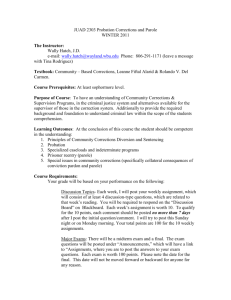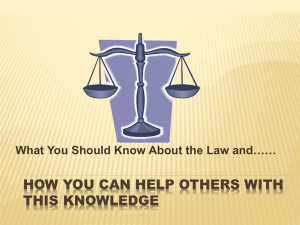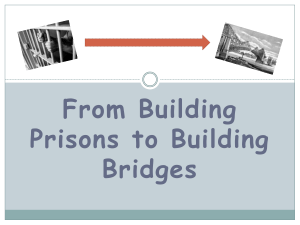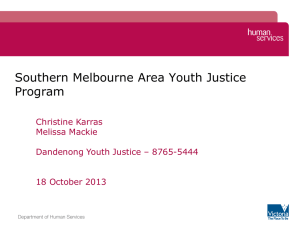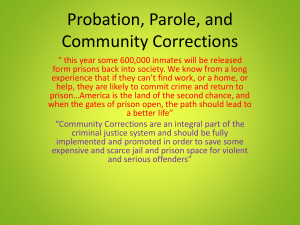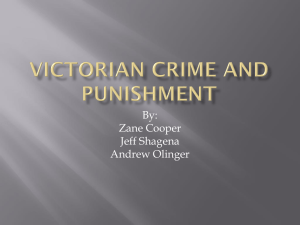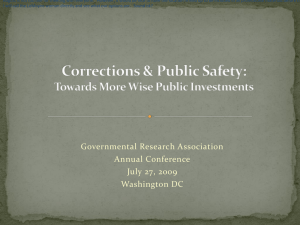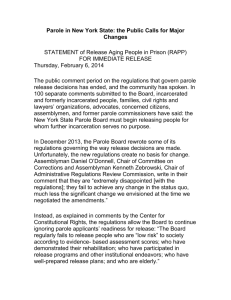Chapter 15 Powerpoint - McCook Public Schools
advertisement
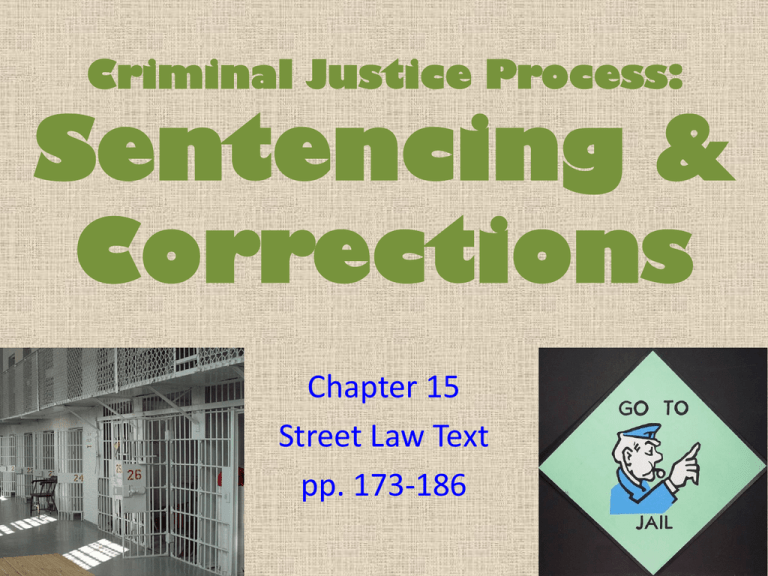
Criminal Justice Process: Sentencing & Corrections Chapter 15 Street Law Text pp. 173-186 Sentencing Options • Suspended Sentence- Criminal does not have to serve the sentence unless they violate some condition, or commit another crime • Probation- Sentence involving supervision by officer of the court, may have other conditions [treatment, check ins, no-internet, etc] • Home Confinement- Sentence to be carried out not in jail but in own home [many times electronic monitoring] must check in before they leave home for essential reasons [dr., school, work] • Fine- Payment to court for violation of law • Restitution- making up for loss or injury of victim [payment] • Work Release- Allowed to work, but must return to jail at night or weekends • Imprisoned- Incarceration- must serve sentence in jail or prison • Death Penalty- Capital Punishment, execution [most states today that have the death penalty use lethal injection] • Presentence Report- Prepared by probation, recommends sentence and details personal, work, and community history [may not be accepted by the judge] Purposes of Punishment • What are the four goals of punishment in most Judicial systems? – Retribution- Revenge for a crime “eye for an eye” – Deterrence- Discourage the offender and others from committing crimes through punishments – Rehabilitation- Help convicts change their behavior so they can be a positive contributor to society – Incapacitation- Physically separated from society, to protect society and/or the convict Parole • Parole- Release from incarceration prior to completion of sentence with conditions • Parole is not a right, and most states have limits on who is eligible for parole. • After a minimum amount of a sentence being served a person may be eligible for parole, or if they are a model prisoner then they may become eligible • Almost all states have parole boards that the person must appear before and actually be granted parole • Some people that are eligible for parole never receive parole, because of various reasons and a no vote by the board Capital Punishment • Capital Punishment- the death penalty.. The ultimate of sentences for crimes • The first ever recorded execution in the colonies was in 1630, since that time there has been capital punishment in some form in the United States, except for 10 years [1968-1978] when the Supreme Court was deciding if the death penalty was a violation of the 8th Amendment, and in 2007 again when the court reviewed the 8th Amendment • Stats as of 2008: – 3200 on death row in 37 States and Federal Prisons – 98% Men [56% White, 42% Black, 11 % Hispanic] • Aggravating Circumstances- Factors that make a crime more severe • Mitigating Circumstances- Factors that make a crime less severe Corrections • When a person is convicted and sentenced to incarceration of some type, they enter the corrections system in one of the following: • Community Corrections [police holding cells] • Halfway Houses [temporary private holding cells] • Jails [City or County, usually for those sentenced to less than a year] • Prison [State or Federal, usually reserved for felonies] • Life Behind Bars • An inmates life behind bars is controlled by rules, there are very few privileges and even fewer rights. Everything an inmate does is monitored at some level, there is almost no such thing as privacy. Corrections cont. • Prison Policy • Over the last twenty years the number of criminals being incarcerated has increased dramatically – Largely due to the fact of the get tough laws requiring long sentences [3 strikes laws] – Also due to the higher prosecution, and tougher sentencing for drug charges • This increase prisoner population has forced states and the federal government to build more prisons, hire more staff, and pay for the incarceration of more criminals – Today the average cost of a years worth of expenses for a person in jail or prison is around $30,000 • This overpopulation is controversial, most people are glad that criminals are off the street, but few like paying more taxes to accomplish this – A few people also argue that money spent to inprison people could be better spent on prevention of crime, and treatment of criminals outside prisons Corrections cont. • Reentering Society – With the cost of incarcerating more people, funds have been cut to after care programs to help ensure former prisoners do not return to prison • Every year 650,000 adults and 100,000 juveniles leave prison/jail/treatment • Within 3 years nearly half ½ will be back in jail – Reentry- program designed to reduce serious crimes committed by FORMER offenders • Phase One- begins in jail and focuses on providing education, mental health services, substance abuse treatment, gob training, and mentoring • Phase Two- focus on transition back into the community; where to live, how to get a job, and how to reestablish ties with community • Phase Three- helps link released prisoners with social services and community based organizations that provide long term support
